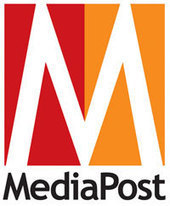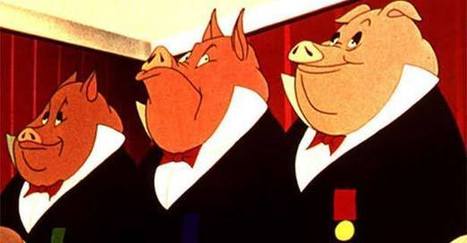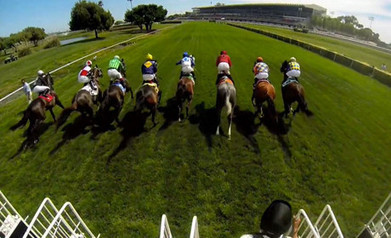 Your new post is loading...
 Your new post is loading...
Native Insider: Part of the challenge with "native" is that each organization has a different understanding of what it is. For the purposes of the research, what is your definition of native advertising?
Wu: In our study, we defined native advertising as sponsored content, which features content that is similar and consistent with publishers’ content and is often consumed by readers like non-sponsored content. I agree that there are also other types of native advertising, such as sponsored social media posts or sponsored hyperlinks. We focused on sponsored content because it is widely adopted by many news organizations, including very reputable ones like The New York Times.
Native Insider: Your research found that when content was identified as native advertising, readers expressed a lower opinion of the media outlet it was published in. However, the reputation of the company being promoted was not affected. Can you elaborate on this finding?
Wu: I think this was one of the most interesting findings in our study. We originally expected that both companies and media outlets would be negatively influenced. However, the media outlet was the only source that was affected. On one hand, this indicates that readers are not surprised by the sponsored content from a company, since similar covert marketing techniques have been utilized before, such as video news releases....
Programmatic advertising may be the sexy new buzz phrase, but more automation can lead to more clutter. When it comes to paid media on the web, the best way forward is to have fewer ads.
Content marketing costs less than advertising, and more people engage with it.It sounds like a revolution but actually there are some rather unkind hidden truths in all of this.
Much like the pigs at the end of Animal Farm, with the evil predecessor gone, what’s replaced it looks… very similar indeed.George Orwell, Animal Farm: "Twelve voices were shouting in anger, and they were all alike. No question, now, what had happened to the faces of the pigs. The creatures outside looked from pig to man, and from man to pig, and from pig to man again; but already it was impossible to say which was which..."
A recent study conducted by BIA / Kelsey predicts that by 2017, social media advertising spending will have reached 11 billion dollars; a significant growth compared to 4.7 billion dollars last year. Business owners and investors are excited with this huge growth, but according to Ian Schafer, chief executive of Deep Focus, a full-service, interactive marketing agency, the ad agency may not be ready to deliver when 2017 comes.
Schafer points out the study conducted by YouGov, which showed that last year, only one out of 20 users in Facebook clicked at least one advertisement. In addition, less than ten percent of Facebook users think that targeted ads are relevant to their needs. One reason why Facebook ads have such a negative impact on users is because they appear to march into our private social media space, sending us spam messages, mobile banners, occupying the right side of our profiles, forcing us to watch 15 second video ads, and more....
Traditional advertising just doesn’t work in social media — at least that’s what most folks working in this area believe. And, I agree with them. Using social networks as a tool for blasting noise, self-promotion, and generally disrupting the flow of conversation can devastate your brand. Even using Facebook ads (or newer LinkedIn ads) is generally pretty ineffective. But, does that mean we can’t learn ANYTHING from traditional advertising? My answer is NO! And, here’s why I think traditional advertising still has something to say about how we SHOULD do social media marketing — new media....
Learn how to use inbound marketing and native advertising together to drive measurable results. Native advertising is all the rage these days. Companies like BuzzFeed and ShareThrough have based their business models on the notion that in-stream, organic-like content will save the day and finally allow everyone to retire those tired and underperforming banner ads to a nice tropical island far, far away. In its current form, however, native advertising is destined to fail just like the banner ad failed. Why? Because most native advertising placements -- just like most banner ad placements -- are not structured with inbound marketing strategies that treat native advertising content creation as a starting point. Rather, the content is treated as the end point. In essence, most native advertising today is basically a branding play....
Public Relations vs. Advertising. Earned media vs. Paid media. Huge budgets vs. tiny ones. Advertising and Public Relations have been engaged in a love-hate relationships for decades. What’s more effective? What offers better ROI? How should they work together? Should they work together?
|
At a time when good-paying freelance assignments are harder to come by, many journalists are heeding the call of native advertising, where the pay is decent and the work is steady. But there’s a cost. Many worry about the impact on their credibility as a journalist. Some are even finding they aren’t so welcome back in newsrooms once they work for the business side.
In the latest in Digiday’s “Confessions” series, we talked to a veteran freelance writer who has written for top women’s magazines and other national publications about the dark side of native. In this case, the journalist was working for a publisher’s content studio, which assigned stories a given client wanted written....
Native advertising is paid content that matches a publication’s editorial standards while meeting the audience’s expectations.
Think Captain Morgan’s campaign on BuzzFeed in general, their 15 Things You Didn’t Know About 15 Captains, Commanders And Conquerors article in particular.
First off, the theme of the article matches the brand’s values: Captain Morgan was a real live pirate who thrived on adventure and raw conquest — a theme not too foreign to BuzzFeed readers.
Moreover, the article matches the editorial standards of BuzzFeed: a list with big images and short, quirky copy — a format their audience expects....
We speak to two of the people involved in creating the news outlet's latest Snowfall-like immersive multimedia project....
Last week The New York Times website published a story called The Jockey, followed by publication in the sports section of the print edition on Sunday.
The Jockey is the latest immersive or multimedia reading experience created by the news outlet that brought us Snow Fall. The Jockey tells the story of Russell Baze, the first North American jockey to ride in 50,000 races, and does so through long-form text, video and moving graphics.This immersive story has a sponsor. Some have interpreted this as native advertising or sponsored content, and AdAge writes that these custom ad units are "designed to better fit the new environment" than the advertising within Snow Fall...-
As absurd as it may sound, chatting with ads could become commonplace as speech-communication with computers continues to evolve. Just looking at ads is bad enough, so who would want to talk to them? While many people would likely answer "no one," voice-recognition software maker Nuance says the opposite is true. What Is A Voice Ad? Wanting in on the booming mobile ad market, Nuance developed a way for people to chat with ads much as they do with Siri on the iPhone. Called Voice Ads, the technology works off the Internet connection of any iOS or Android mobile device.... Hey. You. Get offa my phone!
Articles in a series on Mashable.com called “What’s Inside” looked for all the world like the hundreds of other articles on the digital media site. But journalistically, they were something very different.
The articles, about technology topics in a wide variety of products, including modems and theHubble Space Telescope, were paid for by Snapdragon, a brand of processor chip made by Qualcomm, and the sponsor of the series. Most were even written by Mashable editorial employees.
An article on Google Glass technology was shared almost 2,000 times on social media, indicating that readers may not have cared, or known, if it was journalism or sponsored content, although the series was identified as such. Advertisers and publishers have many names for this new form of marketing — including branded content, sponsored content and native advertising. Regardless of the name, the strategy of having advertisers sponsor or create content that looks like traditional editorial content has become increasingly common as publishers try to create more sources of revenue....
ILate last year, yet another industry buzzword emerged: “Native Advertising.” The term has received a lot of media attention and excitement from brands, rich-media companies and publishers alike, and after cutting through the hype, one question still remains: What does it actually mean? At the basic level, native ads are paid experiences that are complementary to the platform and content in which they are presented. While examples include Sponsored Stories on Facebook or Sponsored Tweets on Twitter, this doesn’t quite do the term justice. Truly native advertising takes things one step further, referring to seamlessly integrating brands into the medium, so much so that the consumer gets more value from the advertising as part of a greater content consumption experience. As Peter Kafka wrote in a recent article, native advertising is about “selling stuff that people want to look at.” This is key to get people to start thinking about brands, without making the ad blatant or disruptive. This can happen on all media from broadcast to digital, print to mobile, using technologies and platforms that engage with native in mind....
|




 Your new post is loading...
Your new post is loading...



















So what is your motivation for joining the My Advertising Pays network? Are you looking for time freedom, financial freedom, an executive lifestyle? Whatever your motivation is the goals you have can be achieved with My Advertising Pays. Simply stick to a simple daily routine to maximize your active number of credit packs. Read more...